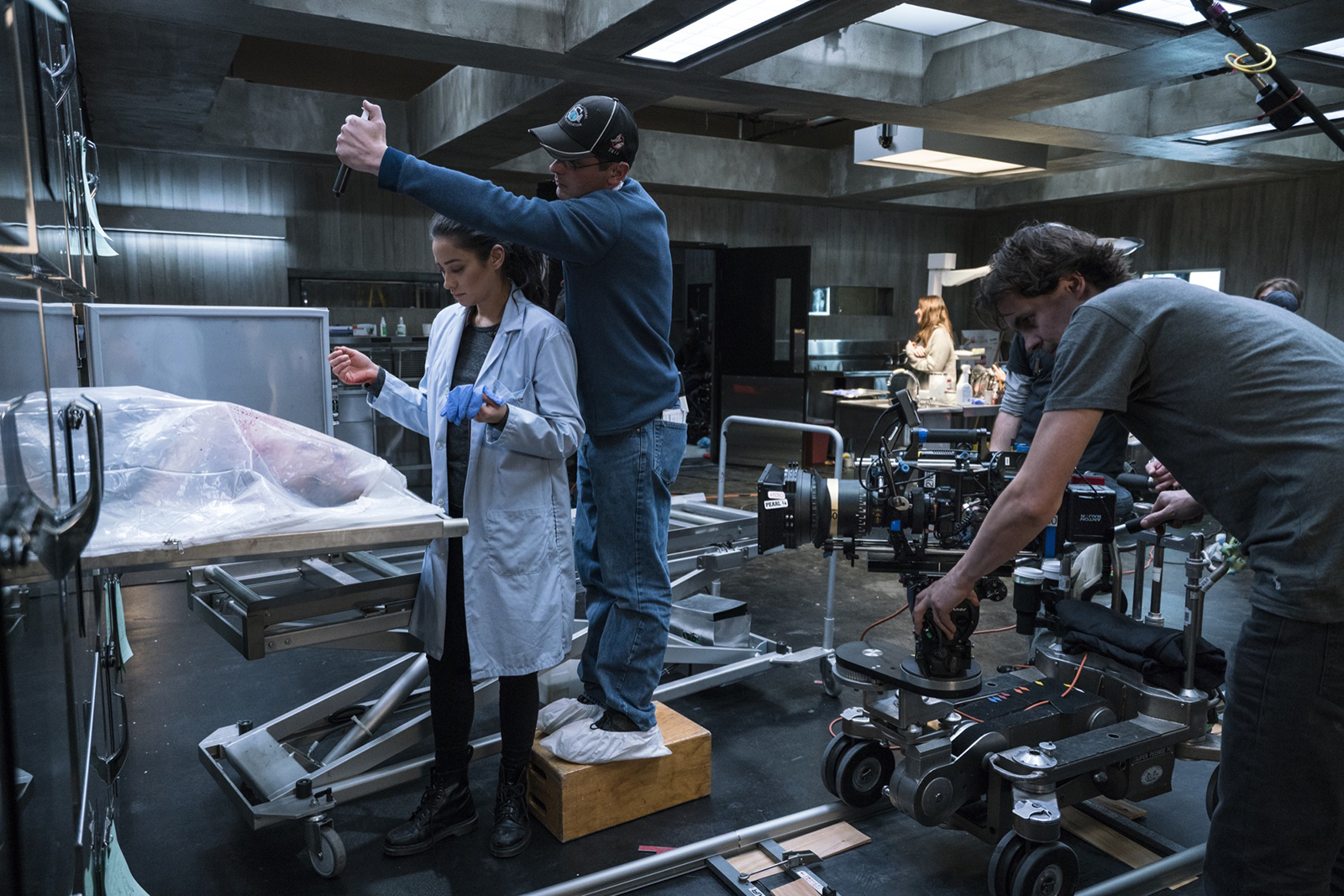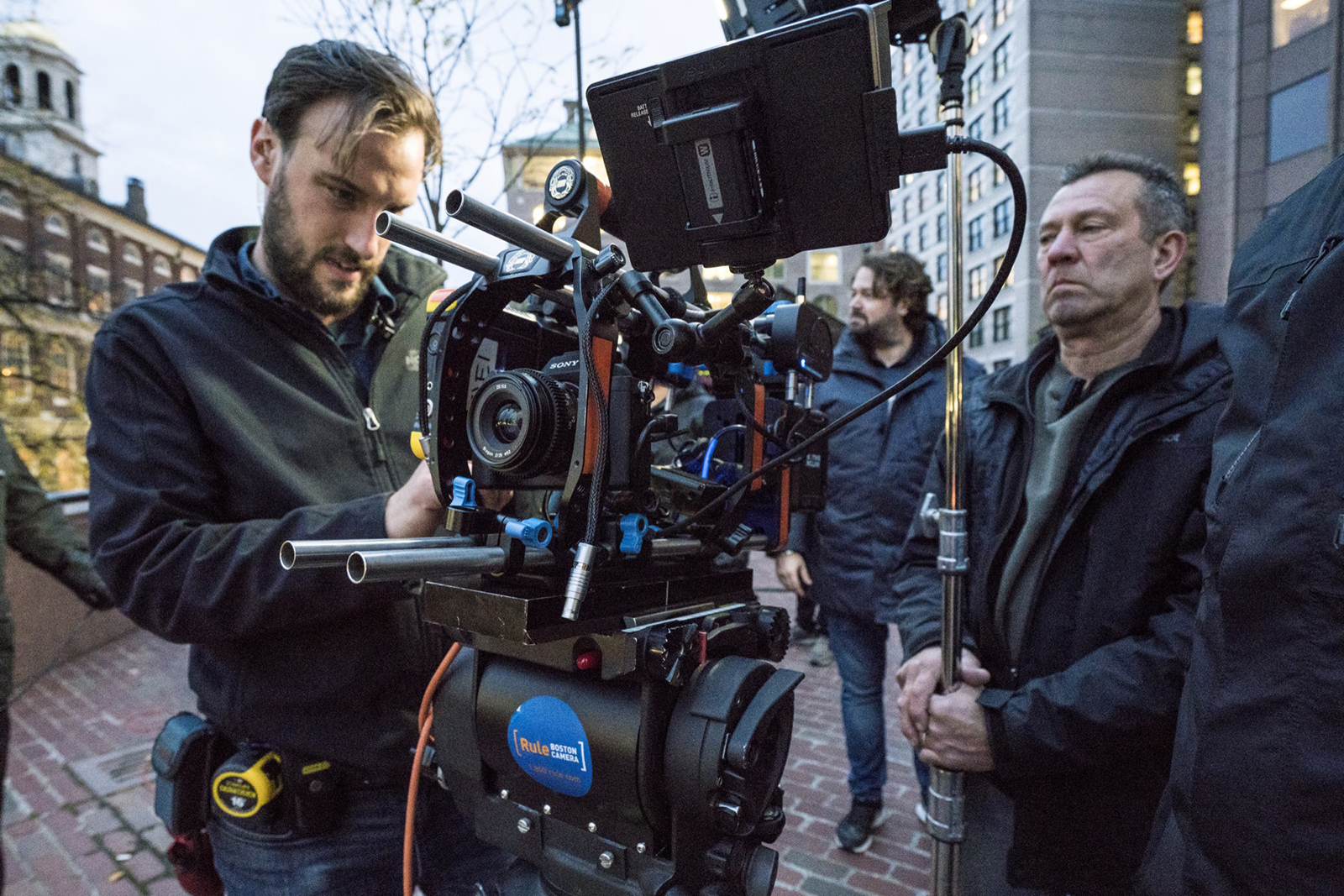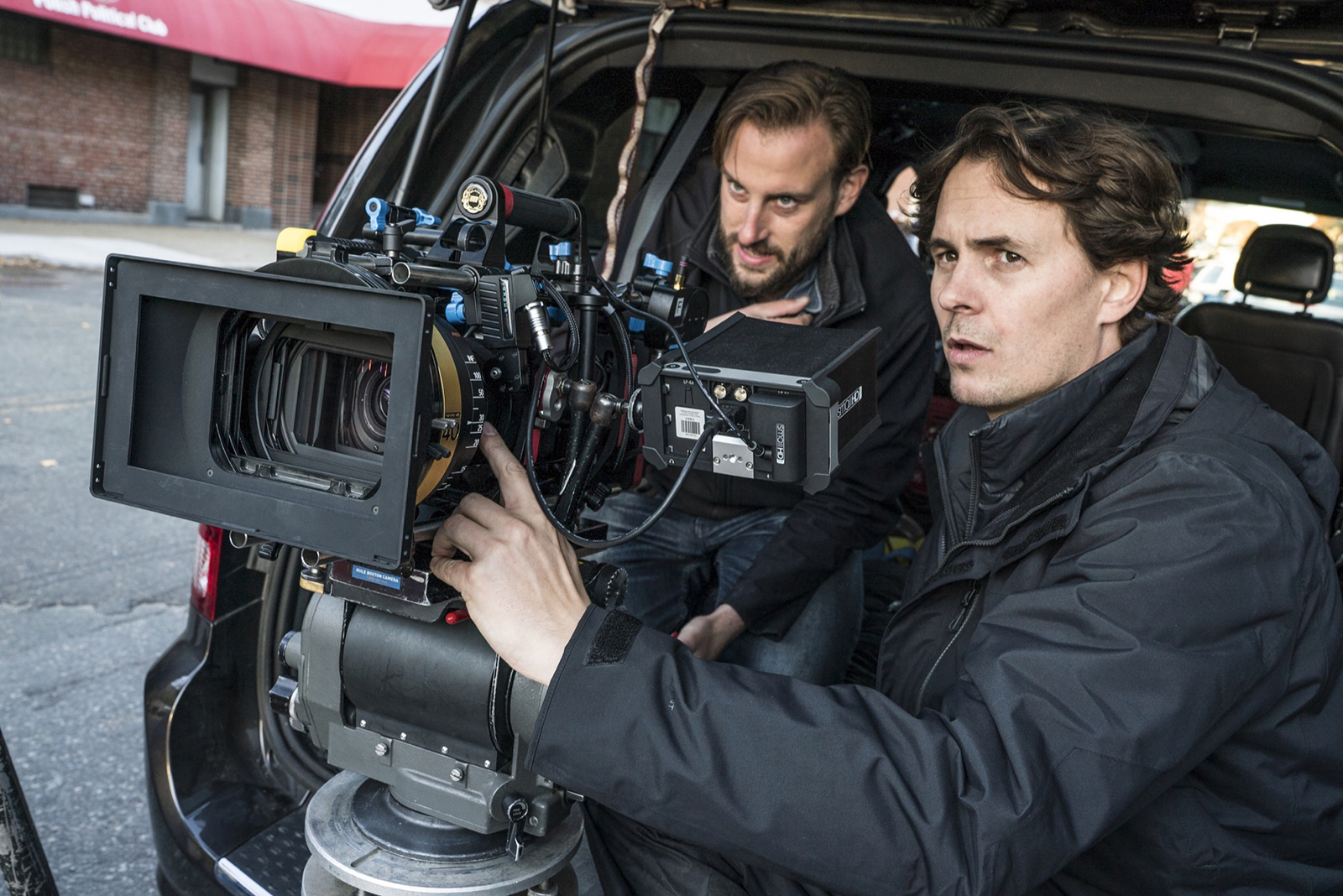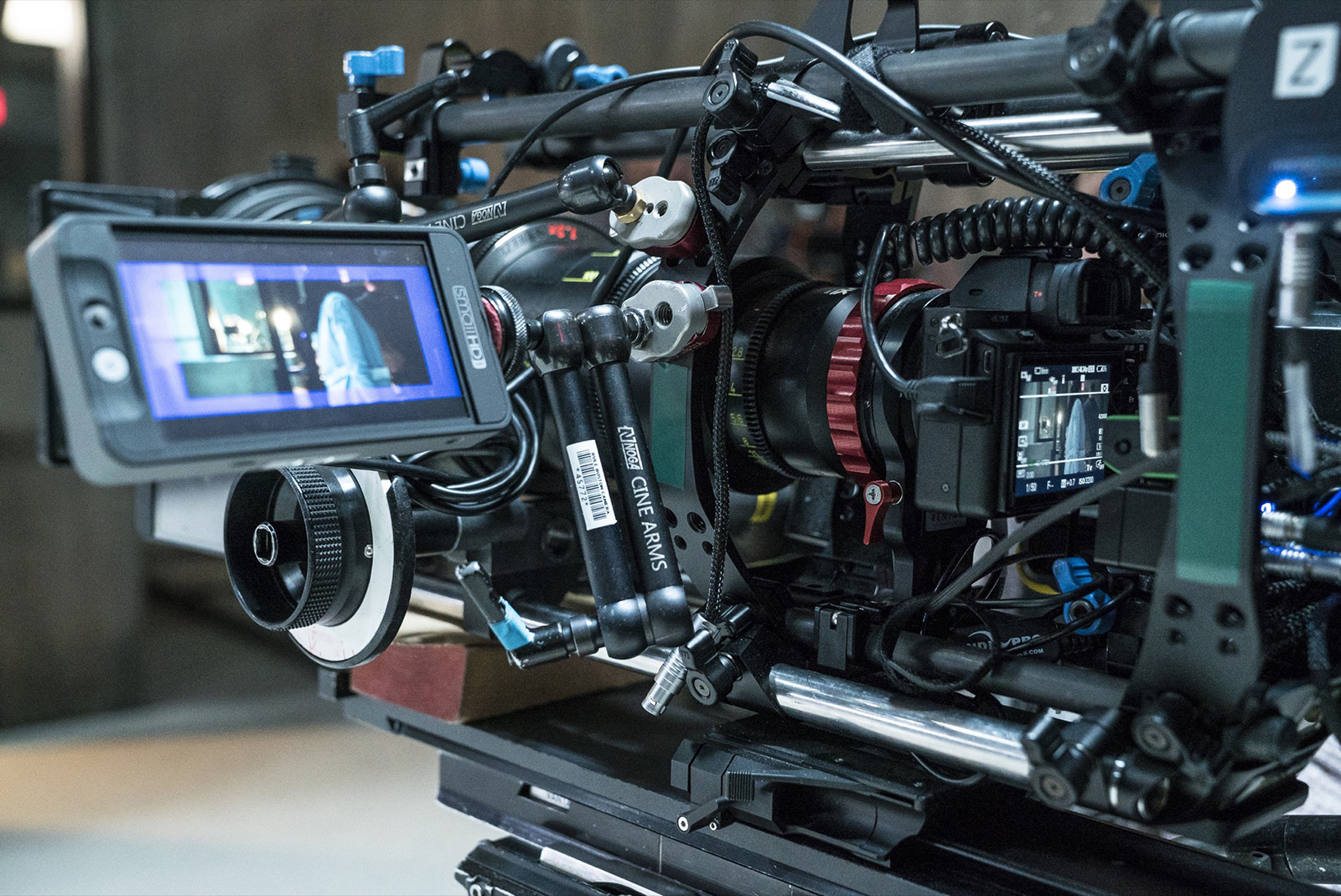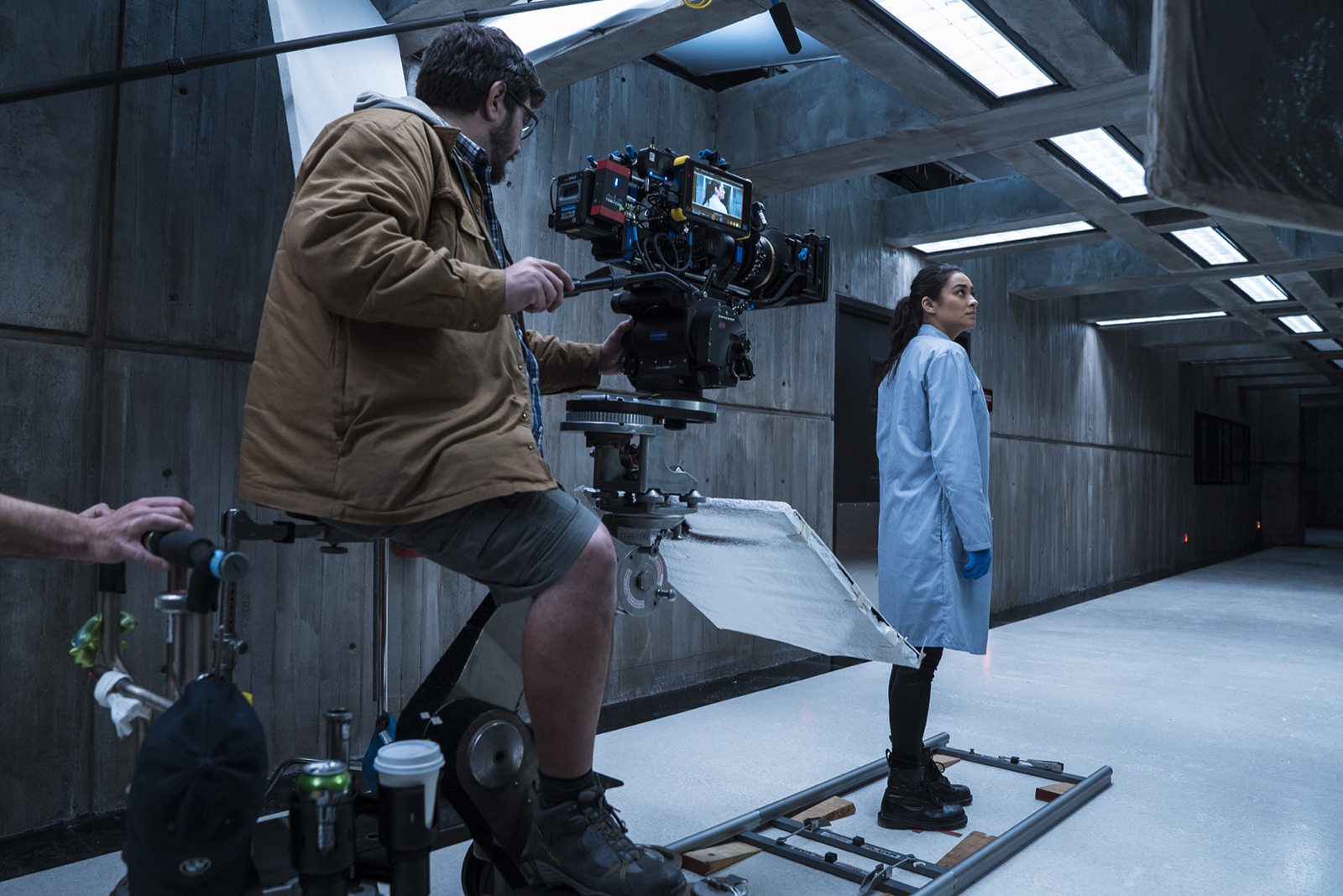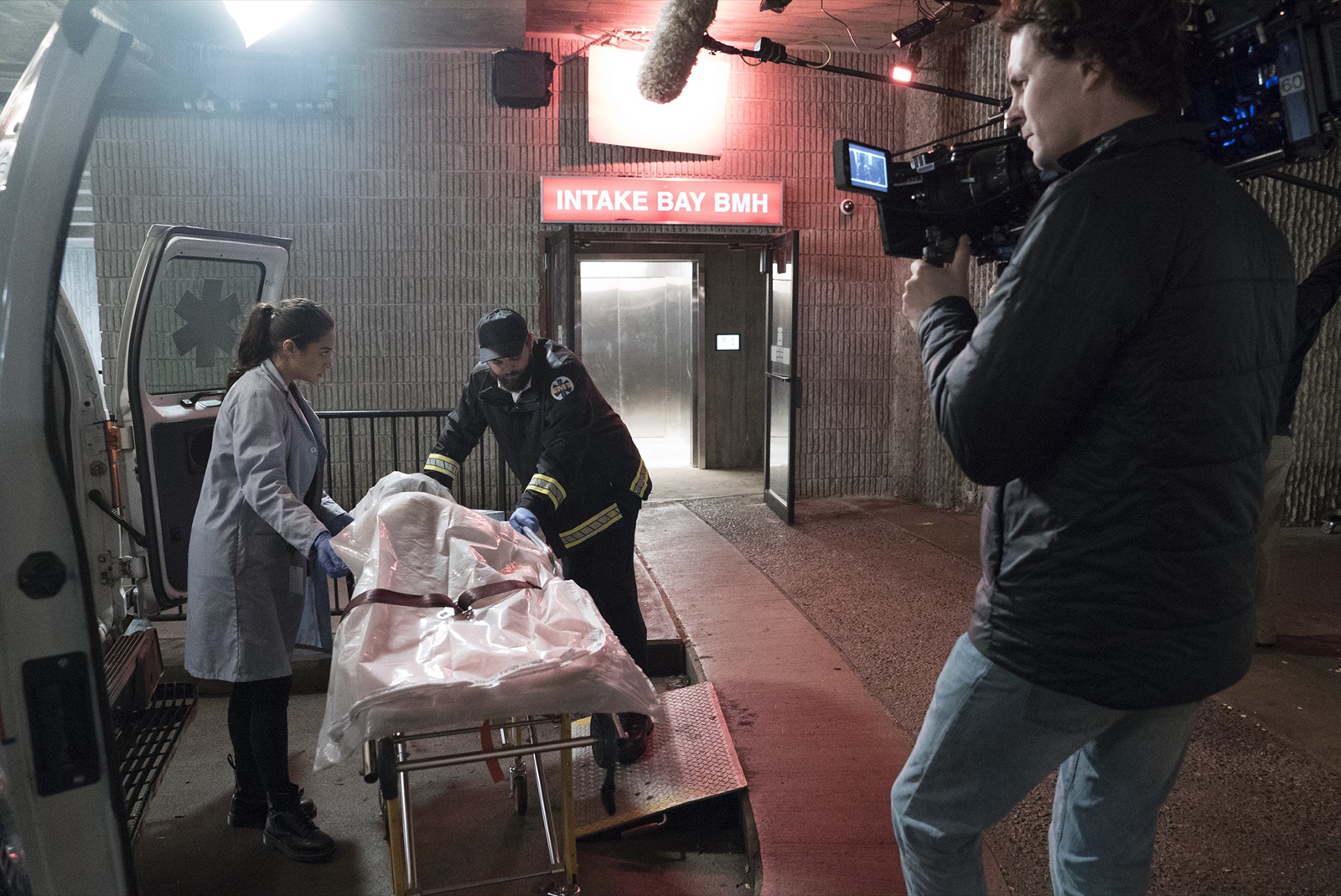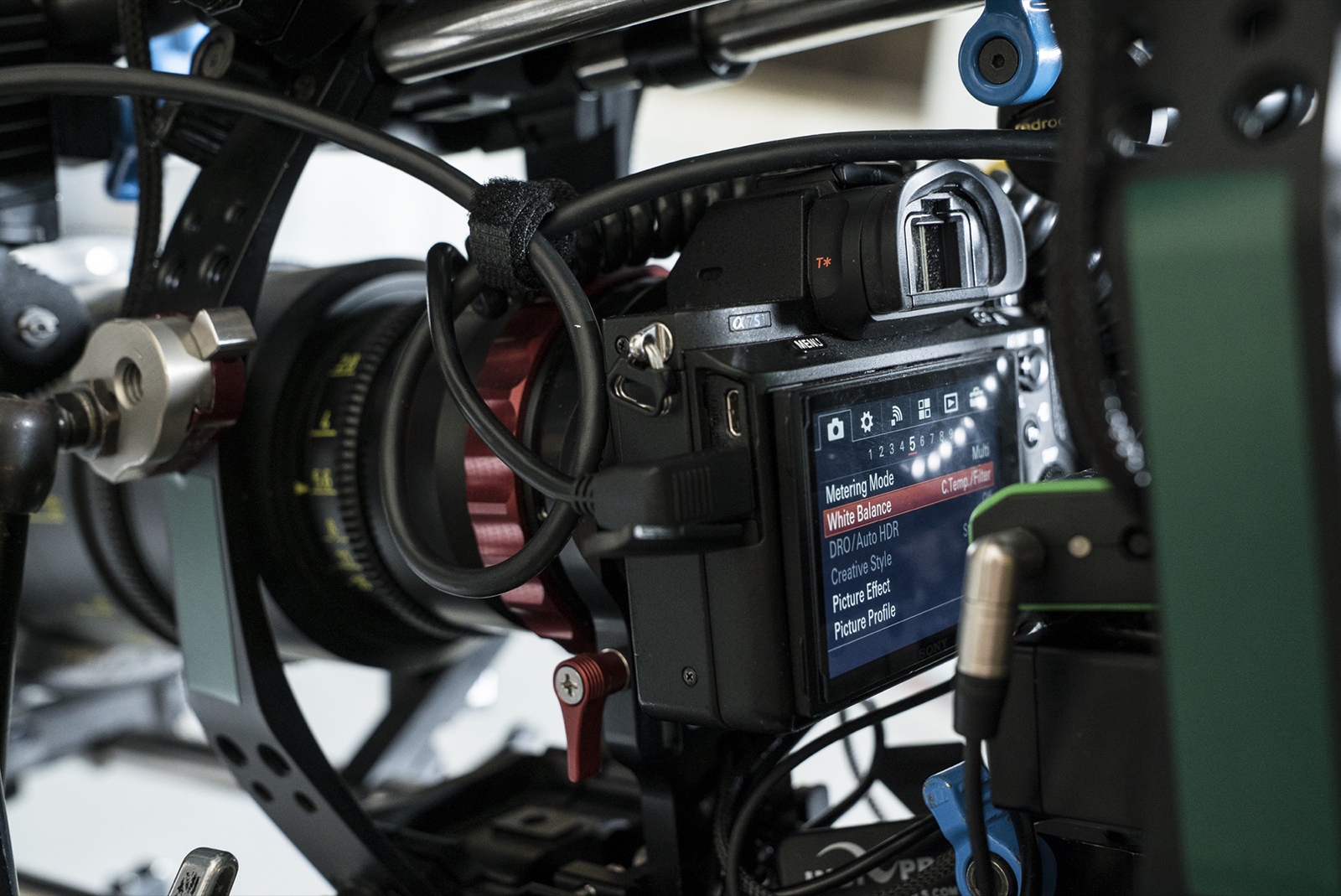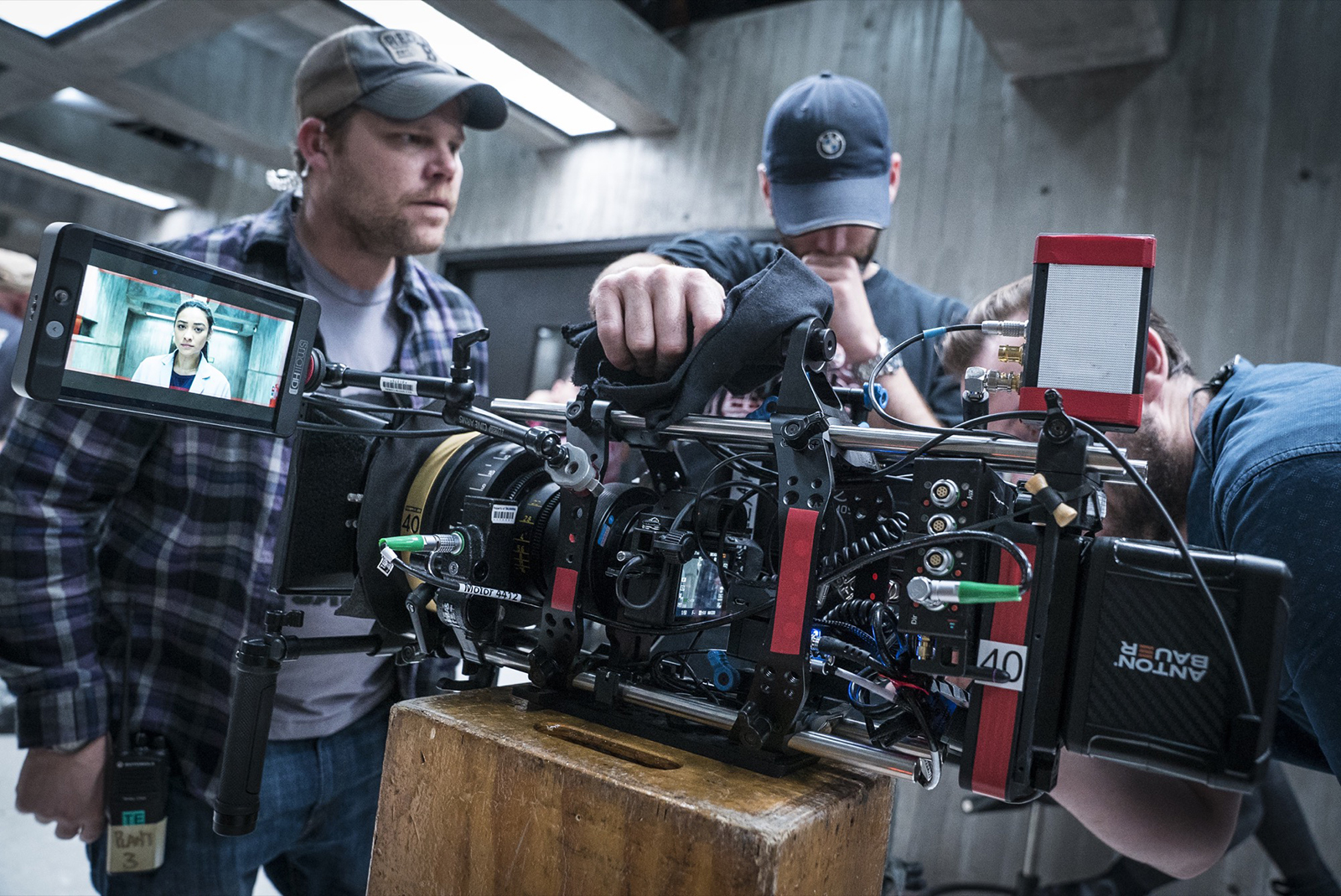Full-frame mirrorless cameras have entered a new realm: Hollywood. The Possession of Hannah Grace, a Sony Pictures horror film in theaters since November 30, is the first feature film shot from start to finish with a full-frame mirrorless camera, according to Sony. The Sony a7S II shot the entire A-roll for the thriller, which follows Megan Reed (Shay Mitchell), a young woman who lands a new job working the graveyard shift at a hospital morgue after the titular character (Kirby Johnson) dies during an exorcism.
Directed by Diederik Van Rooijen and produced by Glenn S. Gainor, the film was shot with several a7S II bodies and Hawk 65 anamorphic lenses using a specially designed adapter to fit the PL mount lenses on the Sony E-Mount. On the camera bodies, the Hawk 65 applied a 1.3x crop to the footage for a widescreen 2.40:1.
‘Footprint of the entire movie’
The film’s director of photography, Lennert Hillege, said the camera suited both the film’s look and budget. Sony says the camera’s dynamic range, colors, detailed blacks, skin tone rendition, highlight roll off, and Sony LOG were all part of the decision to use the camera for the thriller set in an eerie morgue inspired by Brutalist architecture.
“You have to look at the footprint of the entire movie,” the producer said. “The smaller camera’s ability to see beautiful under low-light conditions, the LED lighting technology, and the green methods we used in set construction made this whole production a case study in how to be efficient and still tell a great story with a fantastic look.”
Among the camera’s challenges? The 8-bit compression, which Hillege says meant following certain rules for exposure and color. “There are definitely limitations to be aware of, but the image is spectacular,” he said. “It’s not what you would expect with 8-bit. If you’re not too dirty, and you keep to certain rules about exposure and color, you can shoot really beautiful, monumental images with it.”
The price point of the a7S II — compared to a cinema camera — allowed the crew to use multiple camera bodies, each with an anamorphic lens, eliminating lens swaps. The camera-lens combo was also aided by a cage-and-focus system built by Red Rock Micro, Steadicam stabilization, and Tiffen Filters.
Hillege calls the system a “green” filmmaking solution, though the images aren’t technically perfect, he says. “If you work with a director who wants to shoot anamorphic, and we work with a producer who really wants to change the whole vision of how to shoot a cine movie, perfection is not the most interesting goal,” Hillege said. “It’s how you are telling the story and whether that works. It’s the culmination of many things that gives a certain look. All these new ideas and ways of working are interesting to think about, investigate, and put into action on a script.”
The film debuts in what’s easily the year of the full frame mirrorless camera as both Canon and Nikon unveiled their first entries into the category this fall, with the Panasonic S1 and S1R expected in 2019. Hillege is already planning additional films shot using the Sony a7S II and Hawk 65 lenses.
